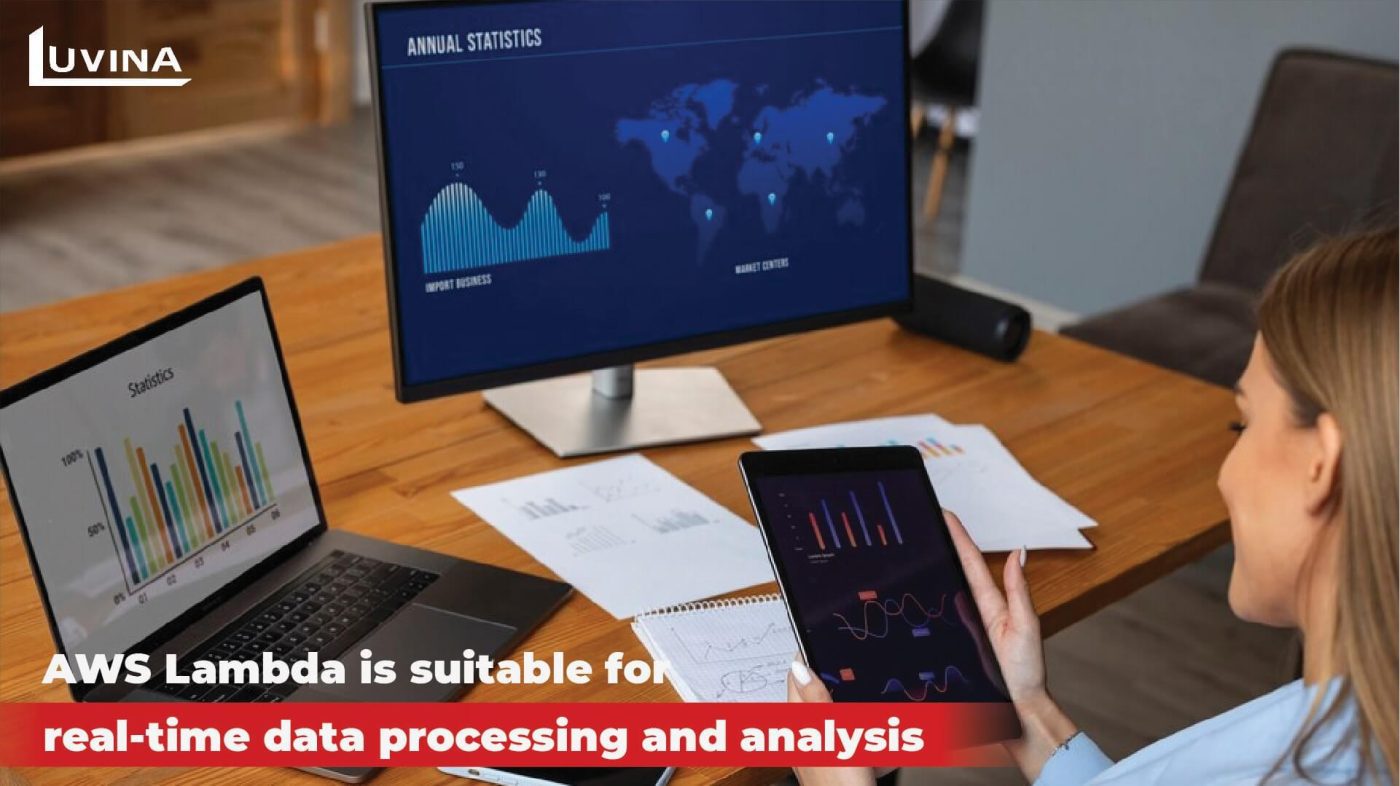Serverless architecture has rapidly become a game-changer in the world of cloud application development. Among the leading providers of serverless solutions, Amazon Web Services (AWS) stands out with its powerful AWS Lambda service. In this article, we will explore the advantages and practical applications of serverless AWS cloud application development, emphasizing the benefits of AWS Lambda functions and real-world use cases.
The cloud computing landscape has witnessed a significant transformation in recent years, and serverless architecture has emerged as a driving force. In a serverless paradigm, developers focus solely on writing code while cloud providers handle server management, scalability, and maintenance. AWS, one of the pioneers of cloud computing, offers a robust serverless service called AWS Lambda. This article aims to provide a comprehensive understanding of serverless application development on AWS, highlighting the key benefits and showcasing real-world use cases.
Understanding Serverless Architecture
Before diving into the specifics of AWS Lambda and its applications, it’s essential to grasp the fundamentals of serverless architecture. Serverless computing, often referred to as Function as a Service (FaaS), is a cloud computing model where cloud providers dynamically allocate resources to execute code functions. Unlike traditional server-based models, where you must provision and manage servers, serverless eliminates the need for such administrative tasks. The core principles of serverless architecture include automatic scaling, cost-effectiveness, and reduced operational overhead.
AWS Lambda Functions: The Heart of Serverless
At the center of serverless application development on AWS is AWS Lambda. AWS Lambda is a serverless computing service that automatically scales and manages the infrastructure required to run code in response to incoming requests. It supports multiple programming languages, enabling developers to build serverless applications with ease. Lambda functions are the building blocks of serverless applications, each representing a single piece of code or a specific action.

Benefits of Serverless Application Development on AWS
The benefits of adopting serverless architecture with AWS Lambda are numerous and have contributed to its rising popularity:
– Cost-effectiveness: With AWS Lambda, you only pay for the compute time consumed when your code is running. There are no upfront fees or fixed costs associated with maintaining servers, making it a cost-effective choice for various applications.
– Scalability: One of the most significant advantages of serverless architecture is automatic scaling. AWS Lambda automatically scales the number of executions in response to incoming requests, ensuring that your application can handle traffic spikes effortlessly.
– Reduced Maintenance: Serverless eliminates the need for server management and maintenance tasks. AWS takes care of server provisioning, patching, and other operational activities, allowing developers to focus exclusively on writing code.
– Rapid Development: Serverless application development is known for its speed. Developers can create and deploy applications faster, reducing time-to-market and enhancing agility.
Use Cases and Practical Applications
Serverless architecture with AWS Lambda finds applications in various scenarios:
1. Data Processing and Analysis
Serverless computing is ideal for data processing tasks. AWS Lambda can process data in real-time or batch mode, making it suitable for tasks like log analysis, data transformation, and report generation.
2. Real-time Event Processing
Many applications require real-time processing of events, such as IoT data streams or user interactions. AWS Lambda can respond to events instantly, enabling real-time decision-making.

3. API Backends and Microservices
Serverless is well-suited for building APIs and microservices. It allows developers to create small, specialized functions that can be independently deployed and scaled.
4. Chatbots and Voice Assistants
Serverless is a popular choice for building chatbots and voice assistants. These applications can leverage AWS Lambda to handle natural language processing and user interactions.
Serverless Frameworks and Tools
Several serverless frameworks and tools simplify serverless application development on AWS. These tools offer features like local testing, deployment automation, and continuous integration. Some notable options include:

– Serverless Framework: A popular open-source framework for building serverless applications. It offers easy deployment, monitoring, and project organization.
– SAM (Serverless Application Model): A framework provided by AWS for defining serverless applications. It simplifies the creation of serverless resources and application deployment.
– Apex: A deployment framework with support for multiple AWS services, including AWS Lambda, API Gateway, and more.
Challenges and Mitigation Strategies in Serverless Cloud Application Development
While serverless application development brings a plethora of advantages such as scalability, reduced operational overhead, and cost efficiency, it does introduce certain challenges that developers need to address for seamless deployment and performance.
1. Cold Starts
One of the primary challenges in serverless computing is cold starts, where the platform initializes a function that hasn’t been used for a while. This delay in function invocation can impact latency, affecting the user experience. To mitigate this, developers can employ various strategies such as optimizing code, employing warm-up techniques by scheduling periodic function invocations or using pre-warmed instances to reduce cold start times and maintain responsiveness.
2. State Management
Serverless architectures are inherently stateless, making it challenging to manage persistent states across function executions. Handling session states, user authentication, and managing data consistency can become complex. To address this, developers can leverage external storage services like databases, cache systems, or state management services. Implementing proper data persistence and adopting stateless design patterns such as RESTful APIs can help maintain application state across multiple invocations without compromising scalability.
3. Application Architecture Complexity
As serverless applications comprise multiple functions and services, ensuring coherent and manageable architecture becomes crucial. Managing the interaction and orchestration between these functions while keeping the system modular and maintainable can become intricate. Employing robust architectural patterns like event-driven architectures, microservices, and well-defined APIs simplifies the management and interaction between various components. Additionally, using deployment automation and infrastructure as code (IaC) tools streamlines the management of complex serverless architectures.
While cold starts, state management, and architectural complexities present challenges in serverless application development, proactive measures, and thoughtful design approaches can effectively mitigate these hurdles. By optimizing code, leveraging external services for state management, and adopting scalable architectural patterns, developers can harness the benefits of serverless computing while overcoming its inherent challenges. The key lies in meticulous planning, thoughtful design, and ongoing optimization to ensure a robust and efficient serverless application ecosystem.
Best Practices for AWS Serverless Development
Developers working with AWS Lambda should follow best practices to ensure successful application development. These practices include:
– Security: Implement security measures to protect your Lambda functions, data, and resources.
– Code Organization: Organize your codebase effectively to keep it maintainable and scalable.
– Monitoring: Implement comprehensive monitoring and alerting to track the performance of your Lambda functions.
– Resource Management: Manage AWS resources efficiently to avoid unnecessary costs.
Emerging Trends in the Future of Serverless Architecture
Serverless architecture continues to evolve, and future developments promise groundbreaking advancements that will reshape the landscape of cloud computing and application development.

1. Edge Computing Integration
The expansion of edge computing through services like AWS Lambda at the edge marks a pivotal advancement. This trend enables developers to deploy code closer to end-users, enhancing the performance of applications by reducing latency. This evolution facilitates the development of real-time, low-latency applications that require immediate data processing and response times. As edge computing capabilities expand further, the scope for innovative and responsive applications will significantly increase.
2. Maturation of Advanced Use Cases
As serverless technologies mature, they are increasingly capable of supporting complex and data-intensive applications. Initially designed for smaller, event-driven tasks, serverless platforms are evolving to handle more substantial workloads. Future developments are expected to provide enhanced support for long-running processes, high-performance computing, and mission-critical applications. This evolution will unlock new possibilities for developers, allowing them to build and deploy sophisticated applications seamlessly on serverless platforms.
3. Serverless Ecosystem Expansion
The future of serverless architecture will witness a broader ecosystem with expanded support for diverse programming languages, better debugging and monitoring tools, and improved integration with other cloud services. This expansion will empower developers with more flexibility, enabling them to leverage serverless computing across a wider spectrum of applications and use cases.
4. Increased Security and Compliance
The future of serverless architecture will prioritize enhanced security measures and compliance standards. As serverless applications handle increasingly sensitive data and critical workloads, there will be a concerted effort to strengthen security protocols, implement robust encryption techniques, and ensure compliance with stringent data protection regulations.
The future of serverless architecture holds immense promise with advancements in edge computing integration, support for advanced use cases, ecosystem expansion, and heightened focus on security and compliance. These developments will revolutionize the capabilities of serverless platforms, empowering developers to create sophisticated, low-latency applications and handle complex workloads with efficiency and agility.
>> Also read: Unlocking the Potential of AWS Cloud Deployment Models
Conclusion
Serverless cloud application development service on AWS, powered by AWS Lambda, offers a range of benefits, from cost-effectiveness to rapid development. Real-world use cases demonstrate its versatility, making it an attractive choice for various applications. While challenges exist, best practices and evolving trends promise a bright future for serverless development with AWS.
{ Get everything you ever
wanted to know about IT.}
Read More From Us?
Sign up for our newsletter








Read More From Us?
Sign up for our newsletter
Read More From Us?
Sign up for our newsletter